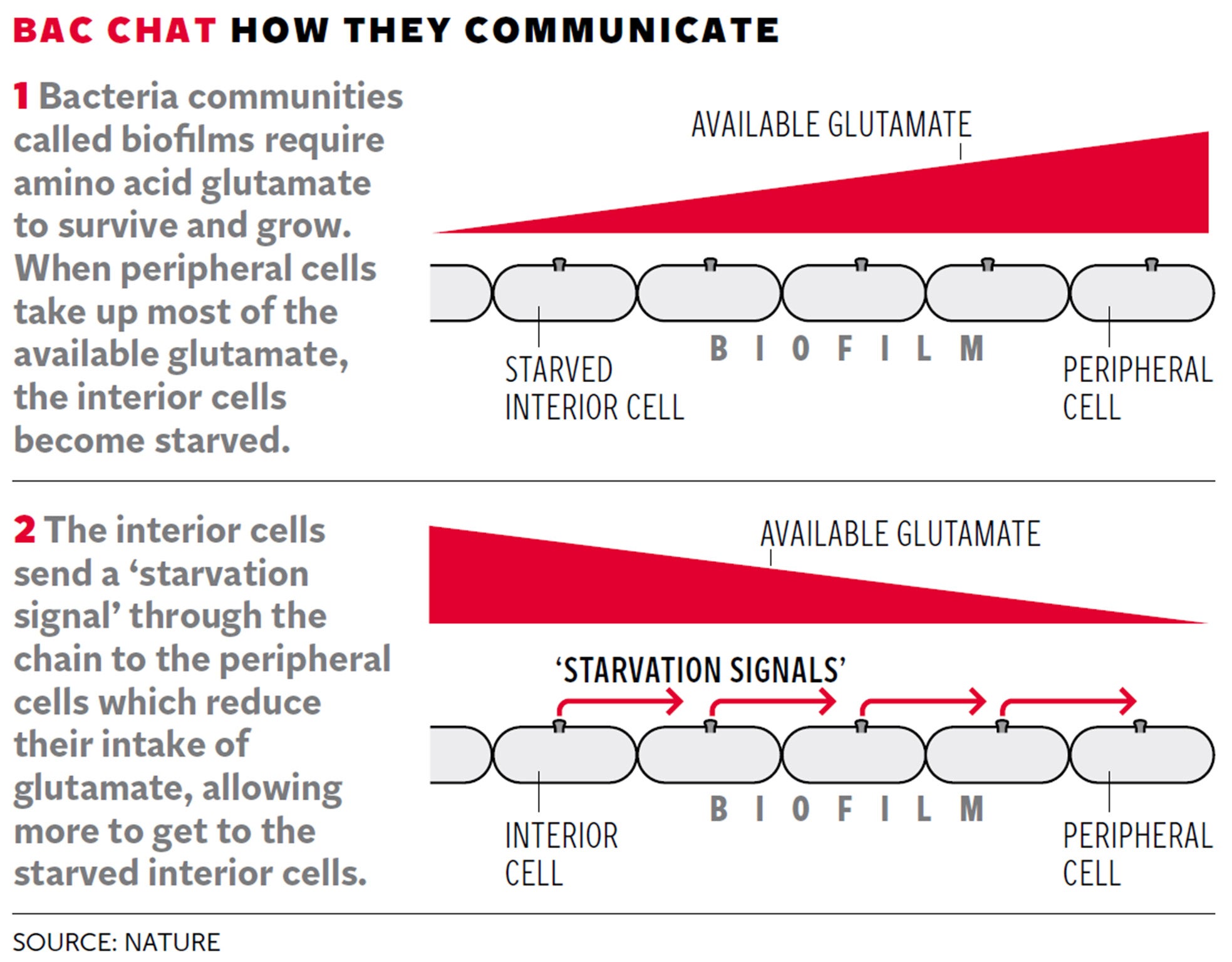Bacteria 'talk' to each other to coordinate their actions, research says
Single-celled organisms found to use electrical signals to communicate like human nerve cells

We may never be able to look at “germs” with quite the same disdain again.
Scientists have discovered that bacteria – commonly reviled as primitive single-cell organisms that make us ill – can communicate with each other in a similar way to nerve cells in the human brain.
Researchers in the US found that – like human nerve cells – bacteria could use electrical signals to “talk” to each other. In this way, the seemingly primitive organisms can synchronise the actions of a colony of billions of microscopically small individuals to function “like a microbial brain”. It was even speculated that separate colonies could communicate with each other and co-ordinate their actions.
The discovery came after the scientists noticed that once “biofilms” – slimy colonies of bacteria – reached a certain size, they grew in a series of periodic cycles.
By examining the colonies using a voltage-sensitive fluorescent dye, they discovered that the bacteria were sending signals to each other by releasing waves of electrically charged potassium particles called ions.

The tactic effectively allowed bacteria in the centre of the colony to tell those on the outer edge that they were “hungry”. This prompted the bacteria at the colony’s outer “frontier” to stop using nutrients to divide to form new cells and increase the size of the group. Instead they let nutrients flow to their “hungry” colonists in the middle. To confirm the communication mechanism, the scientists removed from the bacteria the channel that allowed the electrically charged potassium particles to flow in and out of the organisms. The electrically-based communication stopped.
The research team’s lead scientist, Dr Gurol Suel, from the University of California in San Diego, said: “Just like the neurons in our brain, we found that bacteria use ion channels to communicate with each other through electrical signals. The community of bacteria within biofilms appears to function much like a ‘microbial brain’.”
The research article, “Ion channels enable electrical communications in bacterial communities”, published in the journal Nature, speculated that because electrically charged potassium particles spread easily in watery environments, communication between different colonies might also be possible.
By sending out electrical signals in the form of potassium ions, seemingly isolated communities of bacteria living in a liquid environment might be able to co-ordinate the way their metabolisms operated.
“It is conceivable,” the researchers wrote, “that even physically disconnected biofilms could be capable of synchronising their metabolic oscillations.”
Dr Suel said the discovery might help humans fight germs, especially the increasing number resistant to antibiotics. The way the bacterial communication was triggered was similar to a process in the human brain known as “cortical spreading depression” linked to migraines and epileptic seizures. “This suggests that many drugs for epilepsy and migraines may also be effective in attacking bacterial [colonies],” he added.
Join our commenting forum
Join thought-provoking conversations, follow other Independent readers and see their replies
Comments
Bookmark popover
Removed from bookmarks